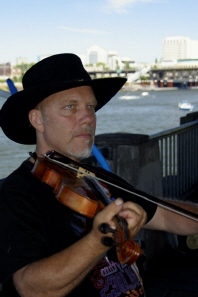Ethnography of Fiddle
This is a brand new WikiBook you can help edit. It is a required text for Ethnography of Fiddle at Wikiversity - but it's free!
The focus is on a serious view of fiddle music around the world from an ethnographic perspective. In "A Warning to Fiddlers", a chapter of A Pattern of Islands, Gimble associated fiddle with the world wide leveling of European colonial imperialism. But various indigenous peoples, such as the Meti of Canada, have adopted the violin and integrated it into folk culture. Thus, the ethnomusicologist encounters a fierce identity with the instrument not unlike that of the Celts, who have deeply intertwined their music, dance and celebratory culture with an instrument most highly developed by Italian instrument makers. This book reviews the literature on this intriguing instrument and various peoples around the globe, and presents an opportunity for integration with a course at Wikiversity which might even come up with some original synthesis by juxtaposing relatively obscure research using the power of collaborative content development as practiced at Wikimedia Foundation.

Ethnography, Ethnomusicology and Ethnochoreology
[edit | edit source]North American Fiddle Traditions
[edit | edit source]African Fiddle Traditions
[edit | edit source]European Fiddle Traditions
[edit | edit source]- Celtic Fiddle Traditions
- Donegal fiddle tradition
- Scottish fiddling
Appendices
[edit | edit source]Other Wiki Books of Interest
[edit | edit source]Bards Old Time Fiddle Tunebook Supplement
Acknowledgements and information for contributors
[edit | edit source]You are invited to help edit this WikiBook or to add chapters or other content. Please review the Ethnography of Fiddle/ Local Manual of Style. The primary editor of this book is Fiddlin' Geof Bard. This book would not have been possible without the tireless assistance of the administrators at WikiBooks, an independent project of the Wiki Media Foundation. Other editors and writers are credited at the View history links or in some cases the mainspace or discussion pages. Special thanks also to the University of California and the many musicians and ethnographers who keep the art of fiddle playing alive and well through thick and thin.

